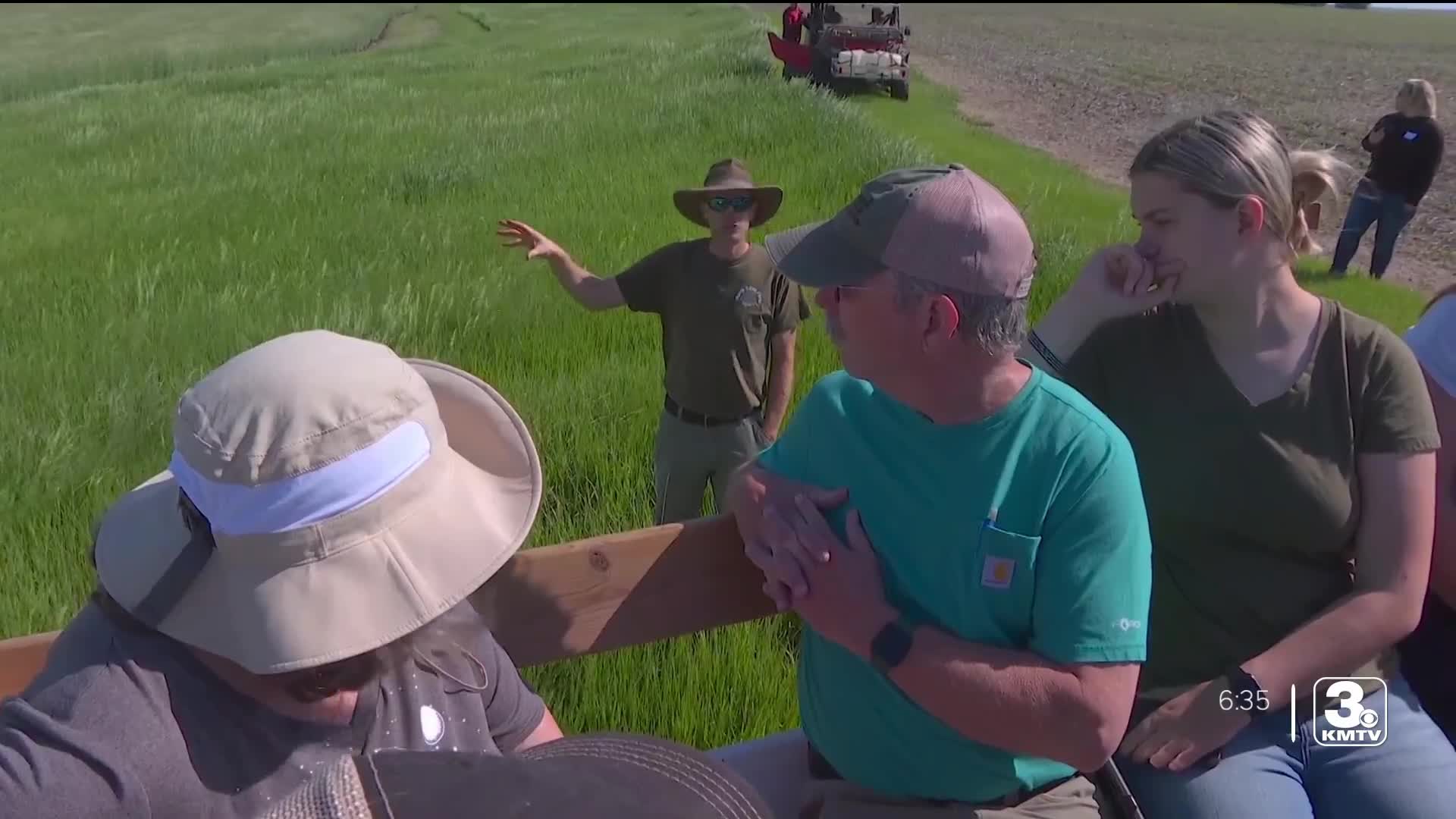Golden Hills RC&D organized a visit to Maple Edge Farm near Hastings, where Jon Bakehouse showed visitors the strip of native prairie he's planted near the West Nishnabotna River on his farm.
- Iowa land was once about 85% prairie before white settlers arrived and began farming on the state's rich soil. Now, experts estimate that the remnant prairie left is less than one percent.
- “One of the advantages to precision farming is able to see, every acre, what your profit margin is on that and very often you’ll find areas that you’re losing money on,” said Bakehouse. “You’re literally better off not farming it.”
- More information: iastate.edu
BROADCAST TRANSCRIPT:
Before white settlers arrived and starting farming, 85% of Iowa’s land was prairie. Now, less than 1% is left.
I’m your southwest Iowa reporter Katrina Markel and I came to Maple Edge Farm near Hastings to learn about efforts to restore some of Iowa’s native prairie.
“Soil health, clean water, wildlife...”
Tim Youngquist is a farmer liaison in the Iowa State agronomy department. He also farms in Sac County.
On Thursday, he spoke with neighbors about prairie restoration at the Bakehouse family farm.
“The prairie sells itself,” Youngquist said. “There’s nothing like getting people out and on local farms, talking to local farmers; than, someone like me coming out, wearing a red polo, talking about Iowa State stuff.”
Jon Bakehouse, whose land borders the West Nishnabotna River, says he watched the 2019 floods wash away his topsoil.
“...That’s when we decided we needed to get more serious about our conservation practices ... If you’re standing in your field and watching your soil, your resource base, wash into the ditch, it’s hard not to take action after that,” said Bakehouse.
The long roots of the prairie plants absorb water and hold soil in place. Bakehouse planted a strip of prairie on land that wasn’t very productive.
“One of the advantages to precision farming is able to see, every acre, what your profit margin is on that and very often you’ll find areas that you’re losing money on,” said Bakehouse. “You’re literally better off not farming it.”
And a number of conservation programs pay farmers to plant prairie on that less productive land.
Bakehouse says it’s tough to change the mentality of planting “fence row to fence row.”
“Just getting out and doing it, I think is more beneficial than all the talking and all the pencil pushing put together,” he said.
Youngquist says the local USDA office is a good place to start for more information.
At the Bakehouse family farm in Hastings, I’m your southwest Iowa neighborhood reporter, Katrina Markel.





